Related Research Articles
Original video animation, abbreviated as OVA and sometimes as OAV, are Japanese animated films and special episodes of a series made specially for release in home video formats without prior showings on television or in theaters, though the first part of an OVA series may be broadcast for promotional purposes. OVA titles were originally made available on VHS, later becoming more popular on LaserDisc and eventually DVD. Starting in 2008, the term OAD began to refer to DVD releases published bundled with their source-material manga.

Fumiko Orikasa is a Japanese actress, voice actress and singer. She has been the voice of Rukia Kuchiki in Bleach, Meyrin Hawke in Mobile Suit Gundam Seed Destiny, Chun-Li in Street Fighter, Kanade Minamino/Cure Rhythm in Suite PreCure, Lotte Yanson in Little Witch Academia and Riza Hawkeye in Fullmetal Alchemist: Brotherhood.
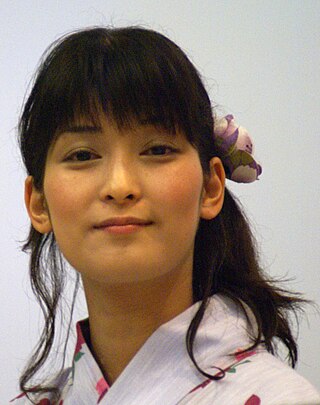
Ayako Kawasumi is a Japanese voice actress and singer. She is affectionately referred to by her fellow voice actors and fans as "Ayachii (あやちー)", "Peyaya","Ayasumi (あやすみ)" and "Aya-nē (あやねえ)". She is a skilled pianist as she has played the piano since childhood. She performed "...To You", the opening theme to Piano, and played pianists in the anime Piano and Nodame Cantabile. She is one of the most prolific and well-known voice actresses in Japan. Throughout her career, she has voiced plenty of iconic and famous characters, such as Akari Kamigishi, Saber, Elie, Melfina, Nodame, Lafiel, Fuu, Leina, Aoi Sakuraba, Mahoro (Mahoromatic), Shenhe and Natsuki Mogi.
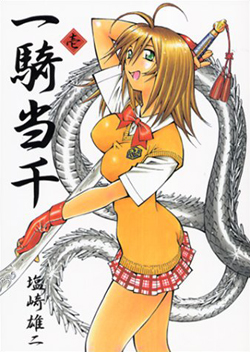
Ikki Tousen, also known as Battle Vixens in North America, is a Japanese manga series written and illustrated by Yūji Shiozaki. Loosely based on the classic 14th century Chinese novel Romance of the Three Kingdoms, the series revolves around an all-out turf war in the Kantō region of Japan where fighters known as Tōshi from seven schools battle for supremacy. The story centers on Hakufu Sonsaku, a fighter who transfers to Nanyo Academy, one of the seven schools involved in the turf war.

Strawberry 100% is a Japanese manga series written and illustrated by Mizuki Kawashita. It was serialized in Shueisha's Weekly Shōnen Jump from February 2002 to August 2005, with its chapters collected in 19 tankōbon volumes. The series was licensed in North America by Viz Media, which released fourteen volumes between July 2007 and October 2010.
Strawberry Marshmallow is a Japanese manga series written and illustrated by Barasui about the adventures of four elementary school girls and their older sister-figure. It began serialization in ASCII Media Works' manga magazine Dengeki Daioh in 2002. In 2005, the manga was adapted into an anime television series and a PlayStation 2 video game. Three original video animation (OVA) episodes were later released from February to April 2007. Another two-episode OVA project titled Ichigo Mashimaro Encore was released in 2009. The manga's tagline is "Cute is justice."
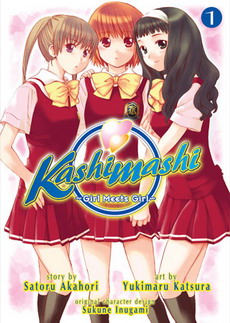
Kashimashi: Girl Meets Girl is a Japanese yuri manga series written by Satoru Akahori and illustrated by Yukimaru Katsura. The manga was originally serialized in Dengeki Daioh between the July 2004 and May 2007 issues, and later published in five bound volumes by MediaWorks from January 2005 to May 2007. The story focuses on Hazumu Osaragi, a normal, albeit effeminate high school boy who is killed when an alien spaceship crash lands on him, only to be restored to health as a girl. This results in a same-sex love triangle that Hazumu finds herself in with two of her best female friends.

Kyō no Go no Ni is a Japanese seinen manga series created by Koharu Sakuraba, the author of Minami-ke. It was originally serialized in Kodansha's Bessatsu Young Magazine from 2002 to 2003, and the twenty-two chapters were later collected together in a single tankōbon volume along with two extra chapters and published on November 11, 2003, by Kodansha. The main premise of Kyō no Go no Ni is the school life of the fifth year class 5-2, focusing on an elementary-school boy named Ryōta Satō.

Baldr Force is a 2D action-shooter game and eroge visual novel with action and detailed sprite characters. The game features a world in the not-so-distant future where humans are able to dive into the network, and fight using humanoid tools called "Simulacrum".

Kanokon (かのこん) is a Japanese light novel series by Katsumi Nishino, with illustrations by Koin. The first novel was released by Media Factory on October 31, 2005 under its MF Bunko J imprint, and it published 15 volumes until December 24, 2010. A manga adaptation illustrated by Rin Yamaki was serialized in Media Factory's seinen manga magazine Monthly Comic Alive between the August 2006 and August 2010 issues. A drama CD was produced by Media Factory and released on March 28, 2007. A twelve-episode anime adaptation produced by Xebec aired in Japan between April and June 2008 on AT-X, and has been licensed by Media Blasters for release in North America. A two-part OVA sequel aired on AT-X in October 2009. A visual novel named Kanokon Esuii developed by 5pb. was released for the PlayStation 2 on July 31, 2008.

Shima Shima Tora No Shimajirō is a 1993 Japanese children's anime series based on the educational learning program Kodomo Challenge by Benesse. It is directed by veteran director Hisayuki Toriumi, with character designs by Shigehito Tsuji. The first Shimajiro series aired at TV Setouchi and all other TXN networks in Japan from December 13, 1993, to March 31, 2008. The second aired from April 7, 2008 to March 29, 2010. The third aired from April 5, 2010 to March 26, 2012, and the fourth and current one began airing on April 2, 2012.
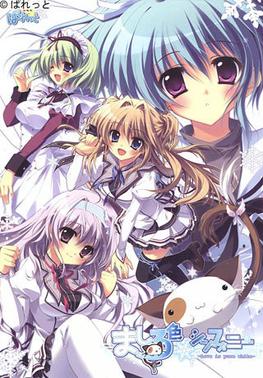
Mashiroiro Symphony: Love is pure white is a Japanese adult visual novel developed by Palette, and it was released in Japan on October 30, 2009 for Microsoft Windows PCs. Mashiroiro Symphony is Palette's ninth title. The gameplay in Mashiroiro Symphony follows a linear plot line, which offers pre-determined scenarios and differs upon the player's decisions, and its storyline focuses on the appeal of the four female main characters. Futago Minazuki has illustrated three manga adaptations serialized in Kadokawa Shoten's Comp Ace magazine. Four drama CD adaptations titled Mashiroiro Symphony Original Drama CD Series were released by Lantis in 2010. A 12-episode anime adaptation produced by Manglobe aired in Japan between October and December 2011.
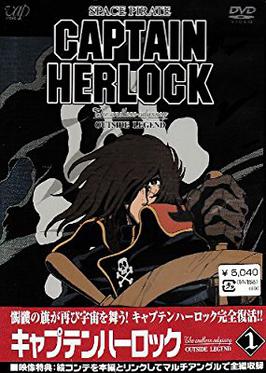
Space Pirate Captain Herlock: The Endless Odyssey, also known in Japan as Space Pirate Captain Harlock: Outside Legend - The Endless Odyssey, is an OVA based on Space Pirate Captain Harlock manga.

Ebiten: Kōritsu Ebisugawa Kōkō Tenmonbu is a Japanese comedy manga series by Kira Inugami and SCA-ji, serialized in Kadokawa Shoten's Comp Ace magazine. Three volumes have been released as of June 2012. A 10-episode original net animation adaptation by AIC ran on niconico between July and September, 2012. Following the ONA series, an OVA episode was bundled with the fourth volume of the manga, released in December 2012. The series has been licensed by Sentai Filmworks in North America.

Locodol, short for Futsū no Joshikōsei ga Locodol Yattemita, is a Japanese four-panel manga series written and illustrated by Kōtarō Kosugi. The manga was serialized in Ichijinsha's Manga 4-Koma Palette magazine from October 2011 to February 2022. An anime television series adaptation animated by Feel aired between July and September 2014, with three original video animation episodes released between September 2014 and June 2016.
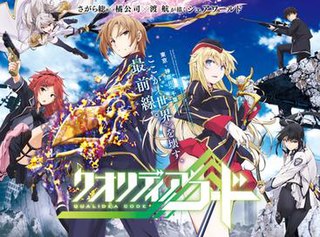
Qualidea Code is a Japanese multimedia project co-published by Shueisha's Dash X Bunko imprint, Fujimi Shobo's Fujimi Fantasia Bunko imprint, Media Factory's MF Bunko J imprint, Shogakukan's Gagaga Bunko imprint, and Shueisha's Jump Square magazine. The original concept was developed by Marvelous and a three-person unit of writers known as Speakeasy made up of Kōshi Tachibana, Sō Sagara and Wataru Watari. It launched in 2015 with several light novels, and a manga began serialization in Jump Square in 2016. An anime television series, produced by A-1 Pictures and directed by Kenichi Kawamura, aired between July and September 2016.

Bocchi the Rock! is a Japanese four-panel manga series written and illustrated by Aki Hamaji. It has been serialized in Houbunsha's seinen manga magazine Manga Time Kirara Max since December 2017. Its chapters have been collected in six tankōbon volumes as of August 2023. A spin-off manga series, titled Bocchi the Rock! Gaiden: Hiroi Kikuri no Fukazake Nikki, began publication in July 2023.